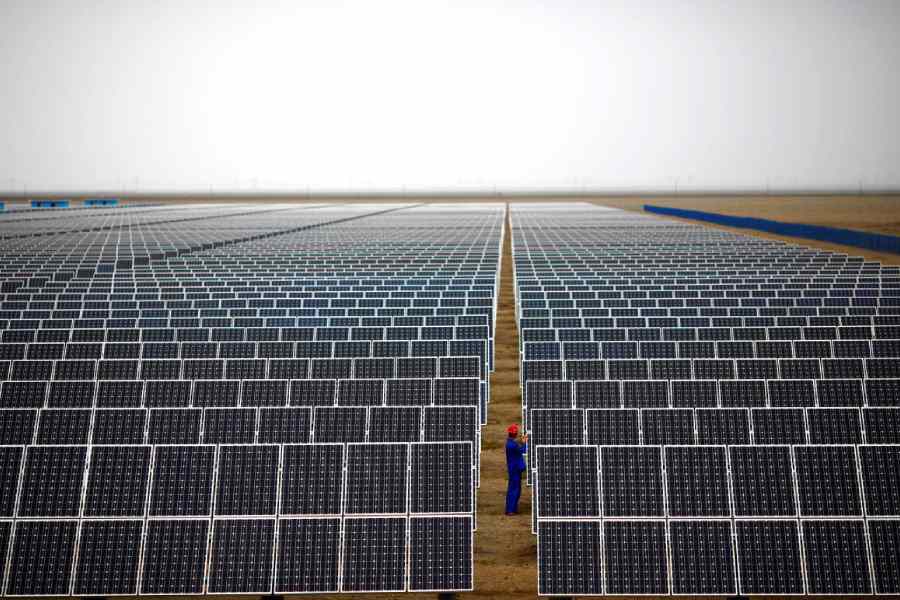
Originally published in The Telegraph
In a bid to accelerate the adoption of solar energy across residential and commercial uses nationally, the Government of India recently declared its intent to hire and train nearly one lakh individuals for the installation process. This is in line with the Government’s larger mission of encouraging adoption of solar energy across residential and commercial uses. The Government of India announced the National Solar Mission in 2010. Ever since the announcement of the National Solar Mission in 2010, the Mission has witnessed a tri-renewal—i. Between 2010-2014; ii. Between 2015-17; and iii. Between 2018-2022 — but much yet remains to be done to meet the strategic objectives. Despite framework revisions and target rescheduling, the government seems to have hit a roadblock owing to its own regulatory mismatches.
Let’s take the case of getting a solar panel installation in a residential building in Dwarka, Delhi. To obtain a net-metering connection, a building owner, through a vendor, will have to submit three sets of documents. First, they will have to submit an application form with the customer’s and the vendor’s details, and a list of declarations on behalf of the consumer to the state’s electricity board . Then they will have to submit Step two is submitting a registration form, which includes submitting the letter to the nodal officer for expressing interest to install a net-metering cell, and a consumer vendor agreement. Step three requires submission of a project completion report and evidence of installed solar plants with geo coordinates, as part of the pre-site checklist.
Moreover, these long drawn government approvals add to the long list of compliances. Thus, a resident in Delhi wanting to install solar panels in their building in the month of March will have to wait until June to be able to use it. Surveys from the empanelled vendors inform that the process takes anywhere between 75-85 working days. The key factor contributing to this long drawn process is not the installation per se, but the government approvals.
Further, as part of the system, the process is entirely opaque as the electricity boards also do not provide any visibility on the time taken for the approval of applications and the inspections. For instance, the NDMC Solar website lists down four steps to installing rooftop solar—(a) submission of request (application and applicable fee), (b) document verification, (c) NOC generation, and (d) approval of request. However, neither the NDMC solar portal nor the NDMC Solar Policy 2022 mention the time within which these approvals will be granted. In absence of a turnaround time duration, the users are left with uncertainty on the time duration an approval will take.
International comparison shows that the process of installation is easier in other countries. Malaysia, for instance, does not require any permits for off-grid and on-grid systems for residential installation. In Singapore, only the town planner’s permission is required for the installation if an individual is outsourcing the installation. However, if the individual intends to do self-installation, they will not require the town planning authority’s approval. Just an endorsement by a certified electrical worker will suffice.
In India, states are constantly placing stress on increasing the adoption of solar energy. Delhi’s Solar Policy 2023 mandates the installation of rooftop solar connection in any new building constructed after the implementation of amendment dated 08 March 2019 to Delhi’s building laws. Similarly, Chandigarh in 2023 also mandated a space of 500 square feet to be provided for the installation of a 5 kwp solar plant in houses of 500 square yards and above. Even in Gujarat, a frontrunner in solar adoption, companies have been reporting regulatory delays and bureaucratic obstacles hindering the installation process. However, these mandates will fail to suffice in absence of any concurrent measures to reduce non-fiscal barriers to the adoption of solar energy.
While in the three phases India has successfully curbed the economic and market infrastructural barriers to solar adoption through incentivizing the formation of a good market base. It is now pertinent that the Government realigns its policy focus towards social and regulatory reforms that promote ease of installation. India’s efforts at revising the process of solar energy installation will go a long way in meeting the country’s international commitments. In 2015, India and France jointly created the International Solar Alliance (ISA). The Alliance aims at bringing countries together to deploy solar energy solutions, which can help fight climate change. Easing the process of adopting solar energy will not only provide a relief to Indian consumers, but also set an example for other 98 ISA member countries of India’s commitment to solar energy.
Anmol Rattan Singh is Co-founder, PANJ Foundation. Email: anmolrsingh28@gmail.com
Sirjan Kaur is a Senior Development Associate at a public policy institution. Email: skaur1569@gmail.com
